- 1
- 2

2nd Workshop - Bone as an Engineering Material - Clinical Assessment of Bone Quality Through HR-PQCT
O tema do Workshop é o tecido ósseo (característica
microestruturais, propriedades mecânicas) e a caracterização da sua
qualidade para a prevenção de fraturas devido à doenças que afetam o
metabolismo ósseo. Participaram do Workshop os seguintes pesquisadores: a)
Dra Sarah Lynn Manske, PhD (Research Associate, Adjunct Assistant Professor,
McCaig Institute for Bone and Joint Health, Department of Radiology, Cumming
School of Medicine, University of Calgary, Canada); b) Dr. Bert Van
Rietenbergen, PhD, Associate Professor, Department of Biomedical
Engineering, Orthopaedic Biomechanics, Eindhoven University of Technology,
The Netherlands; c) Dra Rosa Maria Rodrigues Pereira, MD, PhD, Full
Professor, Director of Rheumatology Division, School of Medicine, University
of São Paulo; d) Rodrigo Bezerra de Menezes Reiff, MD, PhD, Adjunct
Professor, Coordinator of Orthopedic Residency, Department of Medicine,
Federal University of São Carlos, Santa Casa Hospital, São Carlos, SP. As
atividades do evento compreenderam palestras e mini-cursos de pós-graduação
com os seguintes temas: 1) Assessment of Bone Quality; 2) Bone structure,
function and remodeling.
Duração: 01:02:37
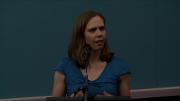
2nd Workshop - Bone as an Engineering Material - Graduate Class - Assement of Bone Quality - Part I - Video 01/03
O tema do Workshop é o tecido ósseo (característica
microestruturais, propriedades mecânicas) e a caracterização da sua
qualidade para a prevenção de fraturas devido à doenças que afetam o
metabolismo ósseo. Participaram do Workshop os seguintes pesquisadores: a)
Dra Sarah Lynn Manske, PhD (Research Associate, Adjunct Assistant Professor,
McCaig Institute for Bone and Joint Health, Department of Radiology, Cumming
School of Medicine, University of Calgary, Canada); b) Dr. Bert Van
Rietenbergen, PhD, Associate Professor, Department of Biomedical
Engineering, Orthopaedic Biomechanics, Eindhoven University of Technology,
The Netherlands; c) Dra Rosa Maria Rodrigues Pereira, MD, PhD, Full
Professor, Director of Rheumatology Division, School of Medicine, University
of São Paulo; d) Rodrigo Bezerra de Menezes Reiff, MD, PhD, Adjunct
Professor, Coordinator of Orthopedic Residency, Department of Medicine,
Federal University of São Carlos, Santa Casa Hospital, São Carlos, SP. As
atividades do evento compreenderam palestras e mini-cursos de pós-graduação
com os seguintes temas: 1) Assessment of Bone Quality; 2) Bone structure,
function and remodeling.
Duração: 00:45:59
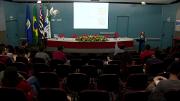
2nd Workshop - Bone as an Engineering Material - Graduate Class - Assement of Bone Quality - Part I - Video 02/03
O tema do Workshop é o tecido ósseo (característica
microestruturais, propriedades mecânicas) e a caracterização da sua
qualidade para a prevenção de fraturas devido à doenças que afetam o
metabolismo ósseo. Participaram do Workshop os seguintes pesquisadores: a)
Dra Sarah Lynn Manske, PhD (Research Associate, Adjunct Assistant Professor,
McCaig Institute for Bone and Joint Health, Department of Radiology, Cumming
School of Medicine, University of Calgary, Canada); b) Dr. Bert Van
Rietenbergen, PhD, Associate Professor, Department of Biomedical
Engineering, Orthopaedic Biomechanics, Eindhoven University of Technology,
The Netherlands; c) Dra Rosa Maria Rodrigues Pereira, MD, PhD, Full
Professor, Director of Rheumatology Division, School of Medicine, University
of São Paulo; d) Rodrigo Bezerra de Menezes Reiff, MD, PhD, Adjunct
Professor, Coordinator of Orthopedic Residency, Department of Medicine,
Federal University of São Carlos, Santa Casa Hospital, São Carlos, SP. As
atividades do evento compreenderam palestras e mini-cursos de pós-graduação
com os seguintes temas: 1) Assessment of Bone Quality; 2) Bone structure,
function and remodeling.
Duração: 00:30:01

2nd Workshop - Bone as an Engineering Material - Graduate Class - Assement of Bone Quality - Part I - Video 03/03
O tema do Workshop é o tecido ósseo (característica
microestruturais, propriedades mecânicas) e a caracterização da sua
qualidade para a prevenção de fraturas devido à doenças que afetam o
metabolismo ósseo. Participaram do Workshop os seguintes pesquisadores: a)
Dra Sarah Lynn Manske, PhD (Research Associate, Adjunct Assistant Professor,
McCaig Institute for Bone and Joint Health, Department of Radiology, Cumming
School of Medicine, University of Calgary, Canada); b) Dr. Bert Van
Rietenbergen, PhD, Associate Professor, Department of Biomedical
Engineering, Orthopaedic Biomechanics, Eindhoven University of Technology,
The Netherlands; c) Dra Rosa Maria Rodrigues Pereira, MD, PhD, Full
Professor, Director of Rheumatology Division, School of Medicine, University
of São Paulo; d) Rodrigo Bezerra de Menezes Reiff, MD, PhD, Adjunct
Professor, Coordinator of Orthopedic Residency, Department of Medicine,
Federal University of São Carlos, Santa Casa Hospital, São Carlos, SP. As
atividades do evento compreenderam palestras e mini-cursos de pós-graduação
com os seguintes temas: 1) Assessment of Bone Quality; 2) Bone structure,
function and remodeling.
Duração: 00:26:37
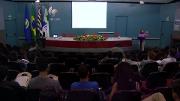
2nd Workshop - Bone as an Engineering Material - Graduate Class - Assement of Bone Quality - Part II - Video 01/02
O tema do Workshop é o tecido ósseo (característica
microestruturais, propriedades mecânicas) e a caracterização da sua
qualidade para a prevenção de fraturas devido à doenças que afetam o
metabolismo ósseo. Participaram do Workshop os seguintes pesquisadores: a)
Dra Sarah Lynn Manske, PhD (Research Associate, Adjunct Assistant Professor,
McCaig Institute for Bone and Joint Health, Department of Radiology, Cumming
School of Medicine, University of Calgary, Canada); b) Dr. Bert Van
Rietenbergen, PhD, Associate Professor, Department of Biomedical
Engineering, Orthopaedic Biomechanics, Eindhoven University of Technology,
The Netherlands; c) Dra Rosa Maria Rodrigues Pereira, MD, PhD, Full
Professor, Director of Rheumatology Division, School of Medicine, University
of São Paulo; d) Rodrigo Bezerra de Menezes Reiff, MD, PhD, Adjunct
Professor, Coordinator of Orthopedic Residency, Department of Medicine,
Federal University of São Carlos, Santa Casa Hospital, São Carlos, SP. As
atividades do evento compreenderam palestras e mini-cursos de pós-graduação
com os seguintes temas: 1) Assessment of Bone Quality; 2) Bone structure,
function and remodeling.
Duração: 01:10:39
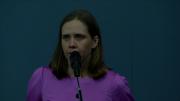
2nd Workshop - Bone as an Engineering Material - Graduate Class - Assement of Bone Quality - Part II - Video 02/02
O tema do Workshop é o tecido ósseo (característica
microestruturais, propriedades mecânicas) e a caracterização da sua
qualidade para a prevenção de fraturas devido à doenças que afetam o
metabolismo ósseo. Participaram do Workshop os seguintes pesquisadores: a)
Dra Sarah Lynn Manske, PhD (Research Associate, Adjunct Assistant Professor,
McCaig Institute for Bone and Joint Health, Department of Radiology, Cumming
School of Medicine, University of Calgary, Canada); b) Dr. Bert Van
Rietenbergen, PhD, Associate Professor, Department of Biomedical
Engineering, Orthopaedic Biomechanics, Eindhoven University of Technology,
The Netherlands; c) Dra Rosa Maria Rodrigues Pereira, MD, PhD, Full
Professor, Director of Rheumatology Division, School of Medicine, University
of São Paulo; d) Rodrigo Bezerra de Menezes Reiff, MD, PhD, Adjunct
Professor, Coordinator of Orthopedic Residency, Department of Medicine,
Federal University of São Carlos, Santa Casa Hospital, São Carlos, SP. As
atividades do evento compreenderam palestras e mini-cursos de pós-graduação
com os seguintes temas: 1) Assessment of Bone Quality; 2) Bone structure,
function and remodeling.
Duração: 00:25:03

2nd Workshop - Bone as an Engineering Material - Graduate Class - Assement of Bone Quality - Part III
O tema do Workshop é o tecido ósseo (característica
microestruturais, propriedades mecânicas) e a caracterização da sua
qualidade para a prevenção de fraturas devido à doenças que afetam o
metabolismo ósseo. Participaram do Workshop os seguintes pesquisadores: a)
Dra Sarah Lynn Manske, PhD (Research Associate, Adjunct Assistant Professor,
McCaig Institute for Bone and Joint Health, Department of Radiology, Cumming
School of Medicine, University of Calgary, Canada); b) Dr. Bert Van
Rietenbergen, PhD, Associate Professor, Department of Biomedical
Engineering, Orthopaedic Biomechanics, Eindhoven University of Technology,
The Netherlands; c) Dra Rosa Maria Rodrigues Pereira, MD, PhD, Full
Professor, Director of Rheumatology Division, School of Medicine, University
of São Paulo; d) Rodrigo Bezerra de Menezes Reiff, MD, PhD, Adjunct
Professor, Coordinator of Orthopedic Residency, Department of Medicine,
Federal University of São Carlos, Santa Casa Hospital, São Carlos, SP. As
atividades do evento compreenderam palestras e mini-cursos de pós-graduação
com os seguintes temas: 1) Assessment of Bone Quality; 2) Bone structure,
function and remodeling.
Duração: 01:10:15

Implantable and Wearable Microelectronic Devices to Improve Quality of Life for People with Disabilities
Implantable microelectronic devices (IMD) and neuroprostheses are finding applications in new therapies thanks to advancements in microelectronics, microsensors, RF communications, and medicine, which have resulted in embedding more functions in IMDs that occupy smaller space and consume less power, while offering therapies for more complex diseases and disabilities. I will address the latest developments in key building blocks for state-of-the-art IMDs, particularly on the analog front-end, RF back-end, and power management. IMDs have been quite successful in neuroprosthetic devices, such as cochlear implants and deep brain stimulators. They have been recently approved for vision and are being considered for brain-computer interfacing (BCI) to enable individuals with severe physical disabilities to control their environments, particularly by accessing computers. Implantable BCIs, however, are highly invasive and should be used when there are no less invasive alternatives that would offer similar benefits.
They can also be utilized as advanced tools for neuroscience research on freely behaving animal subjects.
I will talk about the example of a smart cage, which can wirelessly power, communicate with, and track sensors implanted in or attached to small freely behaving animals. At the same time, novel minimally-invasive methods are being explored for individuals with severe paralysis to make the best use of their remaining abilities to control their environments. An example of such technologies is a wireless and wearable brain-tongue-computer interface (BTCI), also known as the Tongue Drive System (TDS), which enables individuals with tetraplegia to control their environments using their voluntary tongue motion.
Duração: 01:13:04
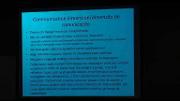
International Network of Educational Institutions (INEI) -2014
Conference:Teacher Education in Crisis? Developing the teaching profession in the twenty first century.6 e 7 de novembro de 2014
Conferência de encerramento
Lesley Bartlett (USA)
Professor - University of Wisconsin
Madison, United States
Duração: 00:24:25

Numerical Modeling of the Atmosphere- GCM Design and Applications 26/10/15 manhã
Curso: " Numerical Modeling of the Atmosphere- GCM Design and Applications "
de 26 à 29 de Outubro de 2015
Auditório Principal do IAG
Instituto de Astronomia, Geofísica e Ciências Atmosféricas da Universidade de São Paulo.
Departamento de Ciências atmosféricas
Lecturer: C. Roberto Mechoso (UCLA/USA)
Teaching Assistant: Yi-Hung Kuo (UCLA/USA)
Course description
The objective of this course is to provide a broad overview of fundamental aspects on GCM design. The emphasis will be on numerical methods. The parameterization problem will be discussed and examples will be presented. A selection of CGM applications to climate problems (e.g. the Sahel drought of the 1980’s) will be outlined.
The following is a list of subjects to be covered. Basic numerical methods for initial-boundary value problems in fluid dynamics, with emphasis on applications to atmospheric and oceanographic problems. Finite-difference methods and truncation error. Linear and nonlinear computational instability. Computational modes and computational boundary conditions. Grid-point and spectral methods used in GCMs. Outlines of boundary layer and convection parameterizations. Examples of results obtained in climate studies using GCMs. Systematic errors of contemporary GCMs and routes for model improvement.
The course will consist of one-hour lecture followed by one-hour discussion both in the morning and in the afternoon. After the afternoon session, there will be a one-hour round-table discussion on selected papers on GCM applications. Lecture notes will be distributed during the course.
Duração: 01:56:51
- 1
- 2
 Carregando
Carregando






